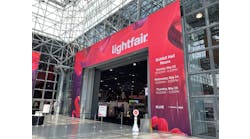Lighting Loads Losing Power in the Demand Response World
In past years, traditional load shedding programs managed by electric utilities targeted lighting as a key contributor of their overall reduction strategies. But as noted in a speaker session delivered by Scott Zeigenfus and Don Barus of Hubbell Lighting at Lightfair International yesterday afternoon, “Lighting’s Influence on Demand Response (DR) and Demand Management in the LED and Controls Era,” the industry’s success over the past 10 years on the lighting consumption reduction front has significantly minimized lighting’s role as a Demand Response (DR) contributor, as compared to HVAC. Although the presentation was geared to the facility management professional, it still offered some valuable insights for the EC&M audience.
After reviewing the basic definitions and differences of DR, Demand Energy Reduction (DER), AutoDR, and Peak Management, the speakers outlined some code requirements on the DR and DER front. California Title 24 Part 6 mandates DR controls for buildings larger than 10,000 sq ft. (excluding spaces with lighting power density levels of 0.5 watts or less). The system must automatically reduce lighting power in response to a DR signal so that the lighting load is lowered by at least 15% below the total installed lighting power level. ASHRAE 189.1 2014 requires automatic systems for demand limiting or load shifting. The system must reduce electric peak demand greater than 10% of the projected peak demand.
The speakers then credited those in the audience with doing a great job of reducing lighting loads in recent years through new light source development (e.g., LEDs) and implementation of controls equipment and systems. They cited recent studies that show the contribution of lighting to electric bills has been reduced by more than 50%. But now that this success has been achieved, what’s next? How does lighting play into the DR world now?
The speakers noted that although HVAC is more aligned with DR needs because it is climate driven, lighting can still be a contributor to DR programs, but in a more “refined” role. They noted lighting’s linear, predictive, and instantaneous nature is the perfect complement to HVAC for DR. It just won’t be the key contributor that it’s been in the past.



